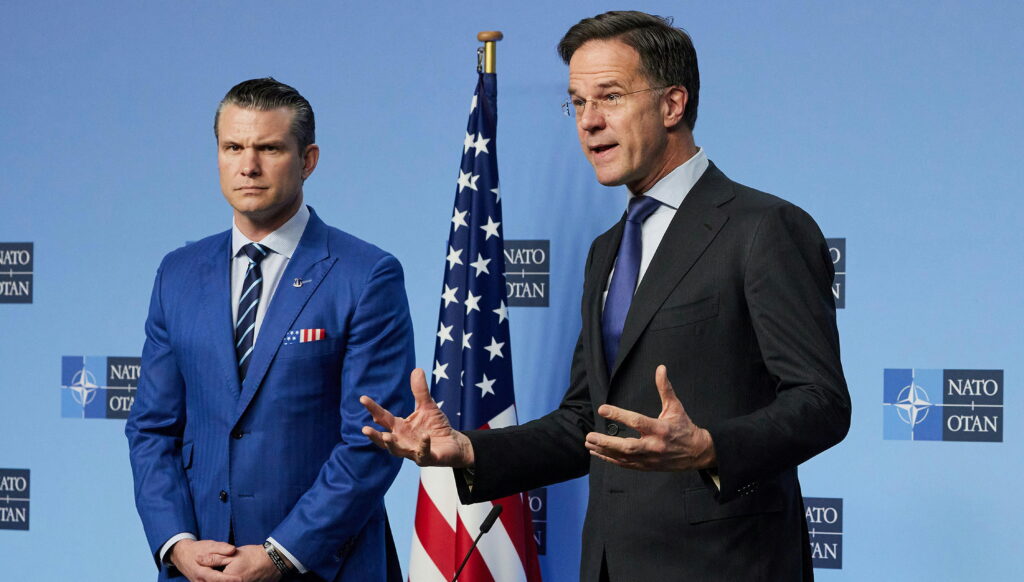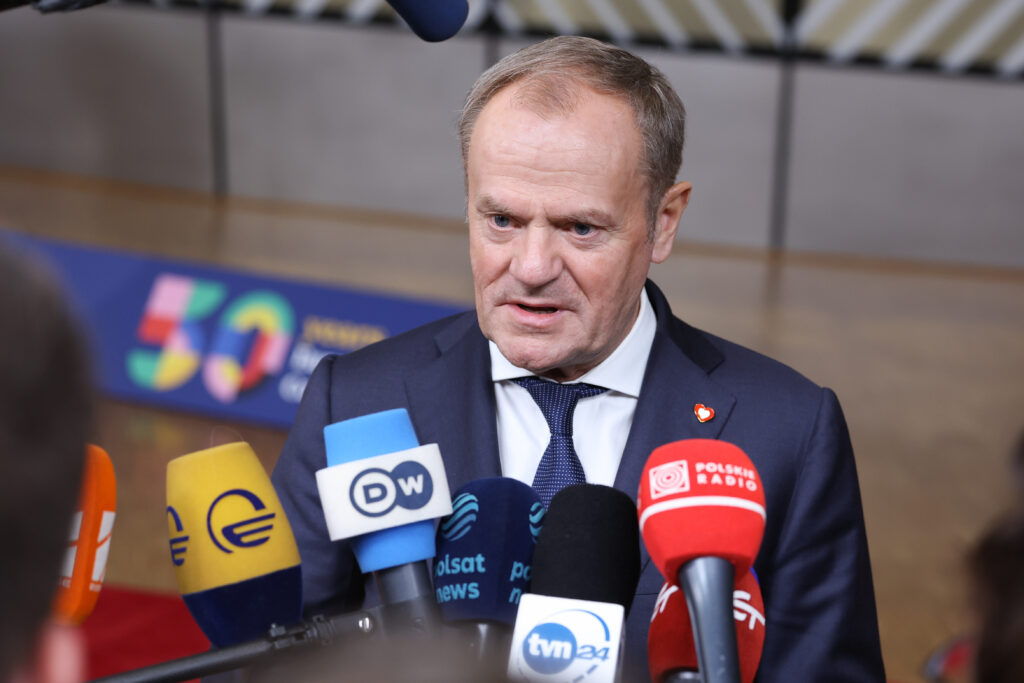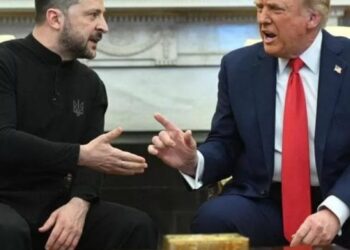Brussels – Putting the pieces together. After the (umpteenth) earthquake unleashed Friday with epicenter at the White House, Europe rallies around the Ukrainian president humiliated by the Trump administration’s top brass. But it also tries to look ahead.
While the chancelleries of the 27 member states and in Brussels are starting to talk insistently on rearmament, there are simultaneously those who are moving to try to mend the rift, douse the flames that erupted between Kyiv and Washington, and bring together the two sides of the Atlantic that seem to be growing ever more distant. The Italian premier is working with her British counterpart on an EU-US summit, while the NATO chief is urging Zelensky to step back and restore relations with Trump.
Rutte scolds Zelensky
After the fire, the firefighters, who for the occasion are also are also the bridge-builders. The fire broke out when US President Donald Trump and his deputy JD Vance, on Friday (Feb. 28), ambushed the Ukrainian leader Volodymyr Zelensky, cornering him and then kicking him out of the Oval Office, making explicit, on live world television, the rift in the Western coalition supposedly supporting the former Soviet republic against Russian invasion.
It is time to rebuild severed bridges, like the one between Washington and Kyiv and between Washington and Brussels. NATO Secretary General Mark Rutte addressed the former. ” I think you have to find a way, dear Volodymyr, to restore your relationship with Donald Trump and the American administration. That is important going forward,” said the former Dutch premier to the Ukrainian president, urging him to urgently put a patch to make up for the diplomatic disaster that unfolded in the White House. It is like telling a bully’s victim to apologize for not giving up his snack.

“We really have to respect what President Trump has done so far for Ukraine,” Rutte noted, referring, for example, to the provision (dating back to 2019) of the Javelin anti-tank rockets, with which the Kyiv army was able to stop the advance of Moscow’s armored columns in early 2022. “We have to give credit to Trump for what he did then, for what America has done since then, and also for what America is still doing” to support the attacked country, the Alliance chief added.
The Meloni and Starmer Initiative
On the other hand, Giorgia Meloni and Keir Starmer are working on the transoceanic bridge. The latter organized a summit between European leaders, EU officials, and NATO members yesterday to coordinate the Old Continent’s efforts in defending the aggressed Ukraine and ensuring the viability of an eventual ceasefire, should it be concluded.
The night before the meeting at Lancaster House, the Italian premier talked to the US president on the phone, “I think it’s very, very important to avoid the risk of the West splitting,” she reasoned from the British capital, avoiding taking sides between what she called pro-Trump or pro-Zelensky “supporters.” Meloni was the only one among key European leaders not to publicly express solidarity with the Ukrainian president after Friday’s ambush.

Then, the diplomatic card: “I proposed a meeting between the US and European leaders because if we divide, we will all be weaker.” It would be an inter-allied summit under the aegis of Rome and London, which seem to have found an unprecedented synergy and now aim to play “an important role in building bridges” (Meloni dixit). On defense, the two governments are already collaborating on developing a sixth-generation fighter jet together in Tokyo. Will a summit be enough to convince the White House tenant not to abandon the North Atlantic Alliance? Just in these hours, his right-hand man (by now a kind of de facto shadow vice president) Elon Musk called for Washington’s exit from NATO and the UN.
Warsaw’s support
Italy and the United Kingdom have found crucial backing in Poland. Warsaw is among the most fervent supporters of Ukrainian resistance (like London but not like Rome, at least in terms of financial resources and mobilized military assets) but insists on the need for a strong transatlantic partnership. “We Poles are supporters of the closest possible alliance between Poland, Europe, and the entire West with the United States,” reiterated Prime Minister Donald Tusk yesterday, flaunting satisfaction with Meloni’s proposed initiative to Trump, “given their excellent relations.”

On the crucial issue of continental security, the path indicated by the Polish leader is that of “military and defense independence of Europe” from Washington, as long as it is “independence, not isolation.” The much-debated and never-realized European NATO pillar, in short. His country has the largest defense budget among the 32 members of the Alliance; in relative terms, forecasts for 2025 speak of 4.7 percent of GDP.
“Europe is a power,” he says, and “will not be an alternative to America, but its most desirable ally.” As Trump called it, “we must rely on ourselves.” To do so, we need to make up for the “deficit of imagination and courage” that afflicts the Old Continent and put it in a position to “defend its borders” without always waiting for Uncle Sam to open the umbrella. After all, it is the Zeitgeist: from Paris to Berlin, via Brussels, the watchword in Europe is “rearmament.” But when people talk like this in Warsaw, there can be no more illusions: the world we knew is over.
English version by the Translation Service of Withub
![Il vertice dei leader europei organizzato a Londra per fare il punto sull'Ucraina [Londra, 2 marzo 2025. Foto: European Council]](https://www.eunews.it/wp-content/uploads/2025/03/london-summit-350x250.jpg)






